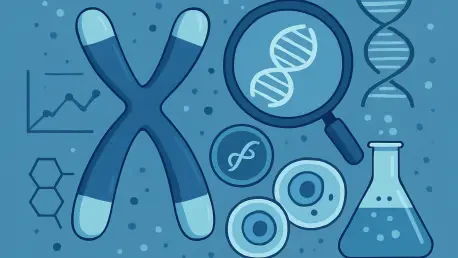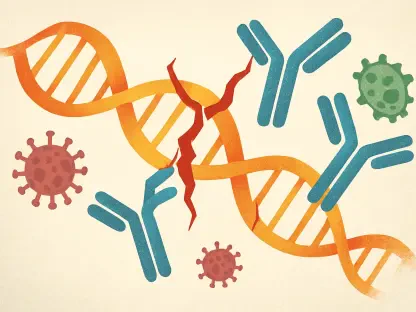I’m thrilled to sit down with Ivan Kairatov, a renowned biopharma expert whose extensive experience in research and development has positioned him at the forefront of innovation in the industry. Today, we’ll dive into his groundbreaking work on chromosome stability, focusing on the critical role of telomeres and a key protein in maintaining our genetic integrity. Our conversation explores how these discoveries are shedding light on severe diseases, offering hope to patients and clinicians worldwide, and paving the way for new approaches in medical science.
Can you start by explaining what telomeres are and why they’re so vital for our health?
Telomeres are like the protective caps at the ends of our chromosomes, made up of repetitive DNA sequences and proteins. Think of them as the plastic tips on shoelaces that keep them from fraying. They shield our genetic material from damage and ensure that our DNA remains stable during cell division. As we age, telomeres naturally get shorter, which can lead to issues with cell function. If they shorten too much or don’t work properly due to other factors, it can cause premature aging or trigger diseases. Their role in maintaining chromosome integrity is absolutely critical for overall health.
What can you tell us about the protein called replication protein A, or RPA, and its function in the body?
RPA, or replication protein A, is a fascinating protein that’s long been known for its role in DNA replication and repair. It acts like a first responder, binding to single-stranded DNA to protect it and help fix damage or copy genetic material during cell division. What’s exciting about our recent work is discovering that RPA also plays a significant part in telomere maintenance. It helps stimulate telomerase, an enzyme that rebuilds telomeres, ensuring they stay long and functional. This was a previously unrecognized function in humans, and it’s a game-changer for understanding how our cells protect their genetic blueprint.
How did your team uncover RPA’s role in keeping telomeres healthy?
We started by using a cutting-edge tool called AlphaFold, which uses machine learning to predict how proteins interact in 3D. It helped us identify that RPA might be working closely with telomerase. From there, we moved into the lab to test this hypothesis. Through a series of experiments, we confirmed that RPA indeed boosts telomerase activity, helping to maintain telomere length. It was a thrilling process—combining computational predictions with hands-on validation—to see this connection come to life and realize its implications for chromosome stability.
What kinds of diseases are tied to telomere problems, and how does your discovery about RPA relate to them?
Telomere dysfunction is linked to several serious conditions, including aplastic anemia, myelodysplastic syndrome, and acute myeloid leukemia. These diseases often involve bone marrow failure or cancer, and they share a common thread of shortened or poorly maintained telomeres, which destabilizes DNA. Our finding that RPA is essential for telomere health means that if RPA isn’t functioning correctly, it can contribute to these conditions. This discovery provides a new piece of the puzzle, showing how mutations or issues with RPA might underlie some cases of these devastating illnesses.
Your work has provided answers for patients with unexplained telomere-related disorders. How does this impact their lives?
For many patients, not knowing the cause of their condition adds a layer of frustration and uncertainty. Our research has helped solve some of those mysteries by pinpointing RPA dysfunction as a potential reason for their shortened telomeres. This gives them and their families a clearer picture of what’s happening at a molecular level. It also opens doors for doctors to test for specific mutations and tailor their approach. While it’s not a cure, having an explanation can be a huge relief and a starting point for exploring targeted treatments or management strategies.
I understand clinicians from around the world have reached out about your findings. What kind of feedback are you hearing?
The response has been incredible. Doctors and researchers from places like France, Israel, and Australia have contacted us, eager to see if their patients’ conditions could be linked to RPA issues. They’re often looking for answers to why certain telomere diseases don’t fit the known patterns. We’ve been collaborating to analyze patient samples, testing whether mutations affect how RPA interacts with telomerase. It’s rewarding to help provide insights that could guide diagnosis or even future therapies for their patients.
What does it mean emotionally and practically for a patient or family to finally understand the root of a telomere-related disease?
Emotionally, it can be a huge weight off their shoulders. Living with a mysterious illness is incredibly stressful—there’s often a sense of helplessness. Getting a concrete explanation can bring closure and a renewed sense of hope, even if the journey ahead is still tough. Practically, it means doctors might be able to monitor the condition more effectively or consider new treatment options based on the specific cause. It’s a step toward personalized care, which can make a real difference in how they manage the disease day to day.
Your research received support from organizations like the National Institutes of Health. How crucial was this backing to your success?
The funding was absolutely essential. Support from the National Institutes of Health and other groups provided us with the resources to conduct complex experiments, access advanced tools like AlphaFold, and sustain a dedicated team over years of research. Without this financial backbone, we couldn’t have pursued such an in-depth investigation into telomere biology or validated our findings. It’s a reminder of how critical public and institutional investment is for pushing scientific boundaries and translating discoveries into real-world impact.
Looking ahead, what is your forecast for the future of telomere research and its role in treating deadly diseases?
I’m optimistic about where telomere research is headed. With proteins like RPA now in the spotlight, I think we’ll see more targeted approaches to diagnosing and treating diseases linked to telomere dysfunction. The next decade could bring therapies that enhance telomere maintenance or correct protein interactions to slow disease progression. Additionally, as tools like machine learning continue to evolve, we’ll likely uncover even more molecular players in this process. My hope is that these advances will translate into better outcomes for patients, turning fatal conditions into manageable ones through precision medicine.









